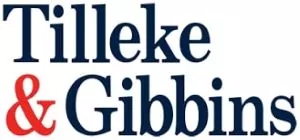- within Cannabis & Hemp, Antitrust/Competition Law and Employment and HR topic(s)
In this article originally published by World Trademark Review, Tilleke & Gibbins senior associate David Mol shares advice on how to collaborate effectively with customs officials at Cambodian border points and ports, offering a guide on how to successfully monitor for—and enforce against—counterfeit and grey market goods.
Can rights holders record trademark and brand-related IP information with Customs and, if so, how?
At present, there is no formal customs IP recordal system in place in Cambodia. However, rights holders may consider:
- a request letter to Customs; or
- recordal of an exclusive distributorship.
Request letter to Customs
A request letter to Customs would be an effective measure in cases where a rights holder is aware of a specific customs checkpoint that is being used to smuggle infringing goods. The rights holder may request to set up a meeting with Customs at the checkpoint to provide officials with:
- guidance on the issue;
- the IP rights involved; and
- information on product identification.
The rights holder may further request the official's assistance in monitoring shipments for certain goods.
Customs has been open and cooperative in the past, setting up direct communication lines between rights holders and border officials. Officials then:
- monitor shipments;
- exchange sighting reports; and
- set up inspections where applicable.
However, this option is not directly regulated under any laws or regulations, and can only be considered as an ad hoc approach in cases where the rights holder is aware of issues at a specific checkpoint. We usually do not recommend using this approach to alert all checkpoints in Cambodia, as it is rather time-intensive, requiring close cooperation and active liaison with officials. Instead, targeting specific checkpoints has proven to work in our experience.
A request letter to Customs may apply to all types of intellectual property. However, a recently issued regulation that addresses suspensions of shipments based on IP infringements does not include suspensions based on patents and designs. This means that rights holders need to request that Customs rely on other laws and regulations when a design right or patent is subject to infringement, which may prove difficult in practice.
Customs officials—rightfully so—feel less certain of their powers, including ex officio powers, to suspend shipments infringing patents and design rights, as the recent regulation does not include these rights.
Recordal of an exclusive distributorship
The second method for rights holders requires appointing an exclusive distributor in Cambodia for goods bearing a registered trademark. This is followed by a recordal of the exclusive distributorship with the Ministry of Commerce's Department of Intellectual Property Rights, which in turn informs Customs of the recorded distributorship.
After this, any trademark-protected goods falling under the recorded exclusive distributorship may be imported by only the appointed distributor. This provides Customs with the power to take action against parallel imports, but may also stop infringing goods, as these are (almost certainly) not imported by the exclusive distributor.
This option currently applies only to trademark rights.
Are copyright registrations also registerable with Customs?
At present, there is no customs recordal system in place for any type of intellectual property, including copyrights.
In addition, although the Berne Convention now applies in Cambodia, the local legislative framework is not yet fully updated to reflect this. The protection of a copyright that is not locally registered or locally published shortly after creation may prove difficult. However, we believe that a legislative update is imminent.
Can brand owners send customs officials a product information guide or any additional materials to assist them in identifying genuine products?
Yes, they most certainly can.
In our experience, the most effective approach is to organize an in-person training session for customs officials. However, when dealing with an IP infringement issue, Customs will accept information of any kind, with a preference for printed materials (eg, a brochure or a presentation) and soft copies. A genuine sample and, if available, a counterfeit sample are often requested as well.
What is the typical process for confiscation or further investigation in the event that customs officials identify potentially counterfeit goods?
Under Prakas (Regulation) No 196 of the Policy for the Suspension of Customs Clearance Procedures of Imports and Exports violating Intellectual Property Rights, there are two main ways for Customs officials to identify counterfeit goods, namely:
- through ex officio actions; or
- after a request by the brand owner.
In the case of ex officio actions, the brand owner will be contacted by Customs in writing, as required under Prakas No 196, once the suspicious goods are found. We note that in the past, the trademark agent as registered alongside a trademark registration is usually the individual contacted.
The owner (or its agent) is required to respond to the customs notification within seven business days, by providing the requested information and (initial) verification of the suspicious goods.
If there is sufficient evidence of infringement, the shipment will remain suspended, giving the brand owner a further 10 business days to commence a customs dispute resolution procedure or to file a court complaint. Customs will request a security from the brand owner, at a maximum 30% value of the shipment (or up to 100% in the case of perishable goods).
If the brand owner does not take action against the infringement, Customs has the right—but is not obliged—to take the matter to court itself.
Another option is having the brand owner request the suspension of a certain shipment. If approved, Customs will notify the brand owner to attend an inspection of the shipment, to which the brand owner must respond in writing within 10 business days. The inspection will then be scheduled, and if the infringement is confirmed, the shipment will remain suspended and the brand owner will have to take the matter to court to continue the proceedings. Again, Customs may request a security placement from the brand owner, at a maximum 30% value of the shipment (or up to 100% in the case of perishable goods).
How will brand owners typically be contacted when suspicious or counterfeit goods are identified?
Typically, their agents as registered will be contacted. This is done in writing where the aforementioned Prakas No 196 prescribes this. Otherwise, phone, email or messaging can be used to notify the agent.
We have not heard of Customs writing directly to overseas brand owners when there is no agent registered with the trademark registry at the Ministry of Commerce's Department of Intellectual Property Rights.
Are there any time-sensitive considerations that brand owners should be aware of when dealing with customs-related IP enforcement?
In the case of an ex officio action, the owner (or its agent) is required to respond to the customs notification within seven business days, by providing the requested information and (initial) verification of the product.
If there is sufficient evidence of infringement, the shipment will remain suspended, giving the brand owner a further 10 business days to commence a customs dispute resolution procedure or to file a court complaint.
If a brand owner requests the suspension of a suspicious shipment, it must reply to a notification for Customs to organize an inspection within 10 business days.
What are the potential costs involved in working with customs officials to protect a brand's intellectual property, and how can these costs be managed effectively?
The main driver costs is engaging a local agent or counsel to manage the process, as customs engagement is rather time-intensive, often on an urgent basis and involves substantial travel time. It is necessary to engage counsel to navigate the process, as many of the regulations are new and not many firms have experience.
Managing costs comes down to the basics of:
- setting a clear scope of work; and
- working with experienced counsel who are not (re-)inventing the wheel at every step of the process.
Official fees are generally affordable for all processes. Security placements may be an issue for high-value shipments, but at the stage of placing the security, there should be sufficient indication that the products are indeed an infringement.
Can you provide examples of successful collaborations between international companies and customs authorities that have resulted in tangible results?
An international company identified a potential shipment that very likely held counterfeit goods bearing its registered trademark. However, due to the nature of the case, the company could not follow the route of Prakas No 196 to formally request a suspension and inspection, as this requires prima facie evidence of the infringement and other information.
The reason for this is that the brand owner had received the information from credible sources—namely, overseas law enforcement—but was not in a position to share the evidence with the authorities. Thus, the owner could not comply with the application requirements of Prakas No 196 to request suspension of the shipment and an inspection of the goods.
It is worth noting that we usually prefer to follow the route of Prakas No 196, as it sets out clear rights and obligations for both Customs and the applicant, which gives more certainty that the inspection will take place.
However, due to the nature of this case, the company relied on an alternative approach and instead submitted a request letter to Customs and other authorities involved. Customs was open, considered the requests and cooperated with the brand owner and its representatives.
Eventually, the shipment was inspected with the attendance of all involved authorities, including Customs and the brand owner, with Customs taking a leading role to organize the inspection and issue official reports on it.
The inspected shipment contained counterfeit goods with an estimated value of several million dollars. The counterfeit goods have since been seized as evidence and are currently placed under seal, pending an application to the authorities for their immediate destruction.
What proactive strategies can brand owners employ to enhance their partnership with customs officials and improve their chances of intercepting counterfeit goods before they enter/exit the market?
Our firm regularly organizes training events, where enforcement officers, including customs officials, learn how to identify counterfeits and learn about a brand's background. In addition, legal training sessions are provided to increase understanding of the law.
These events create goodwill among officials, which often leads to an increase in sighting reports for the participating brands. At these events, brands may also organize side meetings with customs officials to directly address any issues they face and to establish a communication framework with the authorities.
The content of this article is intended to provide a general guide to the subject matter. Specialist advice should be sought about your specific circumstances.


